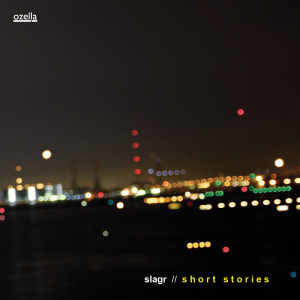 Slagr is a highly regarded trio based in Oslo, Norway, whose music falls under the title of chamber folk. This deeply evocative music mines the intersection where Nordic folk, classical, and new music intersect. Slagr was founded in 2003 by hardanger fiddler Anne Hytta, who writes most of the ensemble’s music. On Short Stories, the group’s fifth release, she is joined by Sigrun Eng on cello and Amund Sjølie Sveen on vibraphone and glass harp. (Since this album was recorded, Sigrun Eng has been replaced on cello by Norwegian Katrine Schiøtt.)
Slagr is a highly regarded trio based in Oslo, Norway, whose music falls under the title of chamber folk. This deeply evocative music mines the intersection where Nordic folk, classical, and new music intersect. Slagr was founded in 2003 by hardanger fiddler Anne Hytta, who writes most of the ensemble’s music. On Short Stories, the group’s fifth release, she is joined by Sigrun Eng on cello and Amund Sjølie Sveen on vibraphone and glass harp. (Since this album was recorded, Sigrun Eng has been replaced on cello by Norwegian Katrine Schiøtt.)
The music on this collection was inspired by a story On an old farmstead in Europe from Norwegian author Hans Herbjørnsrud. The eight pieces, lasting a total of 48 minutes, range from barely over a minute to three of them that clock in at around eight minutes each. It’s highly contemplative music, calming for the most part in spite of some passages of tension and dissonance. I have played this album on repeat for hours at a time as it alternately lulls me to peaceful contemplation and occasionally pulls me back and forces me to listen closely to identify strange sounds or enjoy wisps of lovely melody.
Here’s what the one-sheet that came with this album has to say, in part: “Carefully yet relentlessly the Oslo-based trio explore what remains when time is passing, and, through doing so, illustrate some of the transient nature of our being.” It goes on to discuss how the music relates to the story by Herbjørnsrud:
The protagonist of the story finds a skull on a field near his farmhouse one day. Through the skull and the story of blind Margit that is linked to it, he becomes aware of his own life and the continuity of earthly existence.
That is indeed reflected in the eerie nature of some of these pieces, and the general feel of a steady contemplation of nature and mortality.
To give you a feel for the music, here is a video depicting an edit of the eight-minute long piece “Ârolilja”:
When the album opens on “Folkevise,” Hytta’s hardanger produces a fluttering melody, with the cello soon joining in, followed by the distant drone of (I think) an arco vibraphone; it reaches a dramatic crescendo at around the 4:00 mark, then drops away as Sveen’s tuned glass harp repeats the ghostly melody. “Gamletun,” which follows, is a tone poem depicting the farmer’s field by a river, symbolizing tranquility and the flow of time side by side. (I’m sure it’s coincidence that the title put me in mind of the Indonesian gamelan, although sometimes this music resembles that instrument and genre.) The third tune “Sylvellin” seems to contain an echo of the melody in Folkevise, played with great solemnity like a hymn overheard from a chapel deep in the forest. Sveen produces glassy rattles from the harp, like an antique telephone bell or a fork left on a dish, shaken by a passing train. The cello melody on this piece reminds me somewhat of the Baroque viol da gamba music of Marin Marais. But then there’s a dissonant section like a buzzing of disturbed bees.
It goes on like that, these three, or rather four, instruments sometimes making lovely, familiar sounds and melodies and at others drawing forth noises that evoke creatures and other aspects of nature, sometimes comforting, sometimes disturbing. Slagr’s name comes from an Old Norse word for tune or melody, derived from the word for “to hit,” in reference to the hitting, plucking or strumming of the strings. Slagr is using these simple actions to make music of a high order. Those who like adventuresome music, especially the kind that springs from the Nordic folk traditions, ought to give some time to this group’s music. It has a lot to say, and a lot of feelings to evoke in you and me.
(Ozella, 2015)
